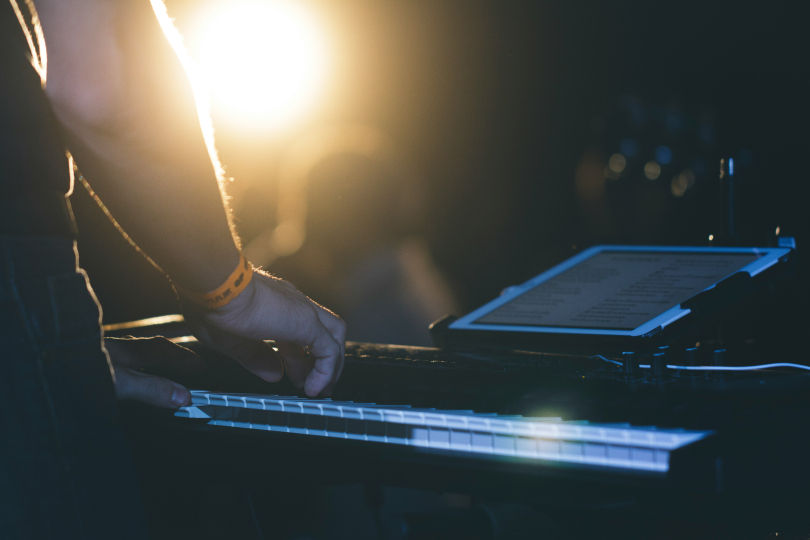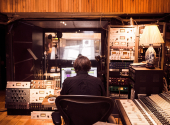
5 Brain Superpowers That Will (or Won’t) Make Your Life as a Musician Easier
Let’s be honest: musical talent often borders on traits associated with the autism spectrum or ADHD – for instance, the ability to analyse and structure pieces down to the tiniest details, or the capacity to dive into practice with such hyperfocus and flow that you forget what time it is and don’t even take a bathroom break. And more superpowers might be “diagnosable,” yet they come in super handy for musical work. Often, these abilities come at the expense of others, which are suppressed – this is known as savant syndrome. Let’s take a closer look at a few of them.
1. Perfect pitch: when a tram screeches in D
The superpower of precisely identifying pitch, even without any reference tone, is probably one of the most desired among musicians. Not only do you not need a tuner (because you’ve got one built into your head), making it easier to play instruments like violin or fretless bass, but you can also recognise tones and entire chords in music you’re listening to, helping you reproduce them more easily on your instrument. To some extent, perfect pitch can be trained – it’s said to work best in children under six years old. But you still need a brain that's wired for it, much like with rhythmic sense.
But like most topics in this article, perfect pitch is both a gift and a curse. Those with it can recognise exact frequencies in non-musical sounds, too. A classmate of mine at the conservatory would comment when a metal chair screeched on the floor: “That was a C3,” and could even tell whether it was in tune according to standard European (tempered) tuning or a few cents off. People with perfect pitch can also identify the screech of a tram turning on the tracks or a beeping alarm by note.
But do you really want that? Maybe this sounds like sour grapes, but I’m quite content with my relative pitch – I can deduce a note name from a reference, like the standard A on a tuner. And if I’m a few cents off? I’ll just call it a “blue note.”
2. Rhythmic hypersensitivity: by how many percent should I speed up?
Can your band’s drummer perceive and precisely maintain tempo, down to the tiniest micro-fluctuations? Congratulations – you have a rhythmically hypersensitive person on your team, someone who seems to have a built-in ticking metronome in their head, much like someone with perfect pitch has an internal tuner in their brain. This kind of person will ensure your band’s tempo doesn’t drift even a hair, which, once again, can be both a blessing and a curse.
Sure, many bands record “to a click,” but sometimes a track sounds more authentic and “human” when it’s recorded in a naturally breathing, slightly shifting tempo. Of course, this often happens during live performances, but you can hear it in studio recordings too, if you were to play along with a metronome. Try, for example, the studio version of Big Love by Fleetwood Mac – the tempo seems constant at first, but if you listen carefully, it subtly and continuously changes throughout.
Now, while the average, moderately sensitive musician can work with a metaphor like “let the tempo breathe” and intuitively (or just through familiarity with Western music traditions) knows when to slightly accelerate or when to introduce a brief agogic pause (think Romantic piano music – Chopin, Liszt, etc.), a rhythmically hypersensitive person will likely want to know exactly by how many percent they should smoothly speed up or slow down in a given musical passage. Basically, like a computer or AI – if you don’t input a precise prompt, you won’t get the response you need.
3. Synesthesia: that D is yellow
It’s hard to say how practically useful this superpower is for a working musician, but it’s certainly incredibly inspiring. A person with synesthesia (from the Greek syn- = together and aesthesis = sensation, perception) has certain perceptions permanently linked together. It’s not just about visual links (like seeing a letter and imagining a colour), but also olfactory or tactile associations (e.g., a word that “smells” bad to you emotionally). The “trigger” is usually something real (you see a sign, hear music...), while the paired perception (colour, taste, etc.) exists only in your mind.
In music, tones or whole musical structures are often connected with colours, but they might also evoke surface textures or flavours. When talking specifically about tone-colour connections, it’s called synopsia. Russian composer Nikolai Rimsky-Korsakov was the first to describe this phenomenon: for him, C was white, D light yellow, E sapphire blue, F green, G golden brown, A pink, and B dark brown. French composer Olivier Messiaen linked colours not only to tones, but to keys and musical expression. Imagine him saying: “Play it more green” – how would you play that?
We non-synesthetic folks have to make do with learned associations. For instance, when a particular song brings back a specific memory, even 20 years later. Like Sting’s ...All This Time – I’m 15, sitting in art class with my Walkman, excited about the bright future ahead because I passed the conservatory entrance exam. I can still smell the paint and clay in the studio. A flash of synesthesia? Probably not – but what a wave of nostalgia!
4. Savant memory
The Prague music journalist Johann Aloys Schlosser recorded the following story in one of the early Mozart monographs (published in 1828):
“In December 1769, father and son set off on a journey to Italy. During Holy Week, they arrived in Rome and on Wednesday attended the Sistine Chapel to hear the famous double-choir Miserere by Gregorio Allegri. Since the Pope had forbidden the transcription of the piece under threat of excommunication, Wolfgang decided to write it down from memory once he got home. He did so and brought his manuscript with him on Good Friday back to the chapel, where the Miserere was performed again. Hidden in his hat, he made a few final corrections. He was spotted, word spread, and it caused quite a stir in Rome. Everyone insisted that he play what he had written at a concert, and it later turned out that Mozart’s transcription didn’t differ from the original by a single note.”
Not only did W. A. Mozart have perfect pitch – and likely many of the other superpowers mentioned in this article – but this incident beautifully illustrates the phenomenon known as savant memory: the ability to instantly memorise and later reproduce an entire lengthy composition, including instrumentation. Who wouldn’t want that superpower? Just think about how much effort it takes to transcribe a jazz solo, or to figure out the precise chord progression of your favourite song without chord charts, tabs or sheet music.
I may have already mentioned my favourite life hack in a previous article: if you don’t have savant memory and, like most mortals, you have to piece together your musical transcriptions like a swallow building its nest, an app like Music Speed Changer can help. It lets you slow down a recording or a selected section of it (without significant loss in audio quality or pitch), so you can loop and replay it endlessly.
5. Photographic memory
And speaking of memory, imagine if you could remember anything you looked at. No more carrying around songbooks and no more performing from behind a wall of sheet music. You’d simply glance at a score once and instantly retain it as a “visual map” in your mind. The conductor Arturo Toscanini supposedly conducted entire operas this way – without a score, purely by heart.
Photographic memory, also known as eidetic memory (from the Greek eidos – form, image), was first described in the early 20th century but later questioned by many as an unproven myth. In the context of music, it may actually be more about the powerful combination of auditory, visual and motor memory. Still useful, right?
And what superpowers do you wish you had – or already have – for your musical life? Let us know in the comments on our Facebook post.
If you have found an error or typo in the article, please let us know by e-mail info@insounder.org.





